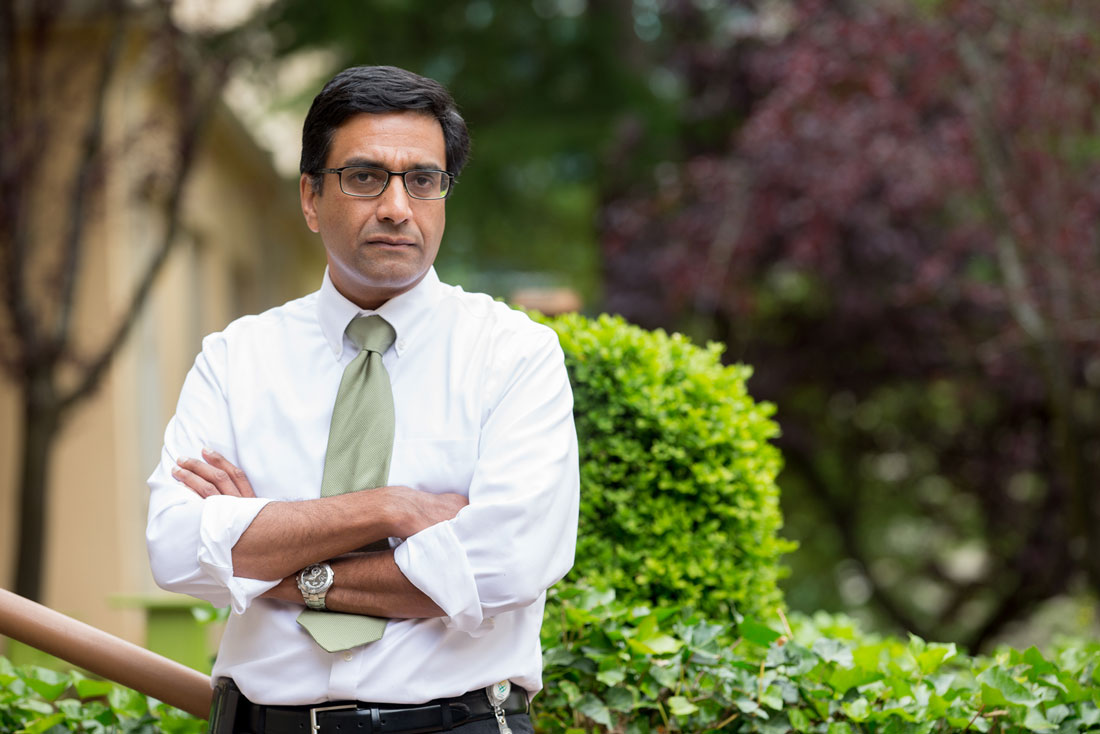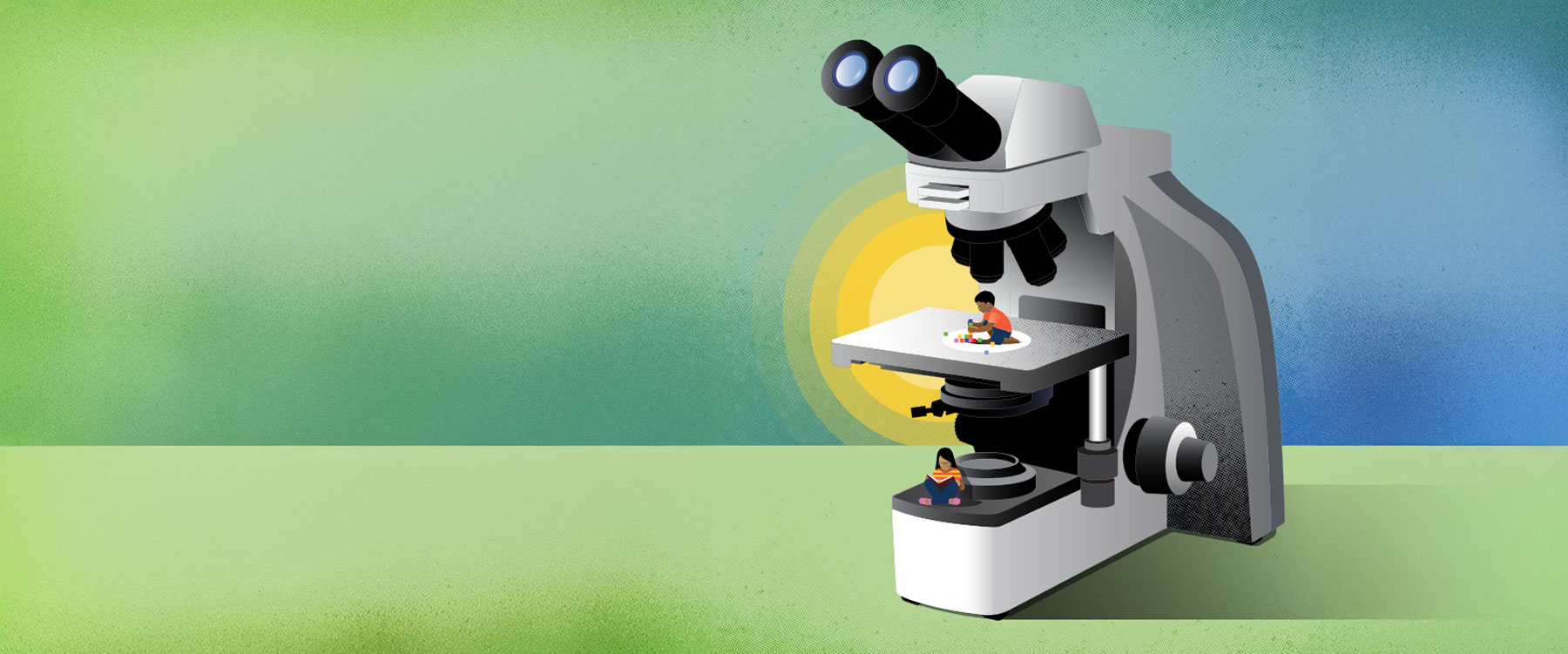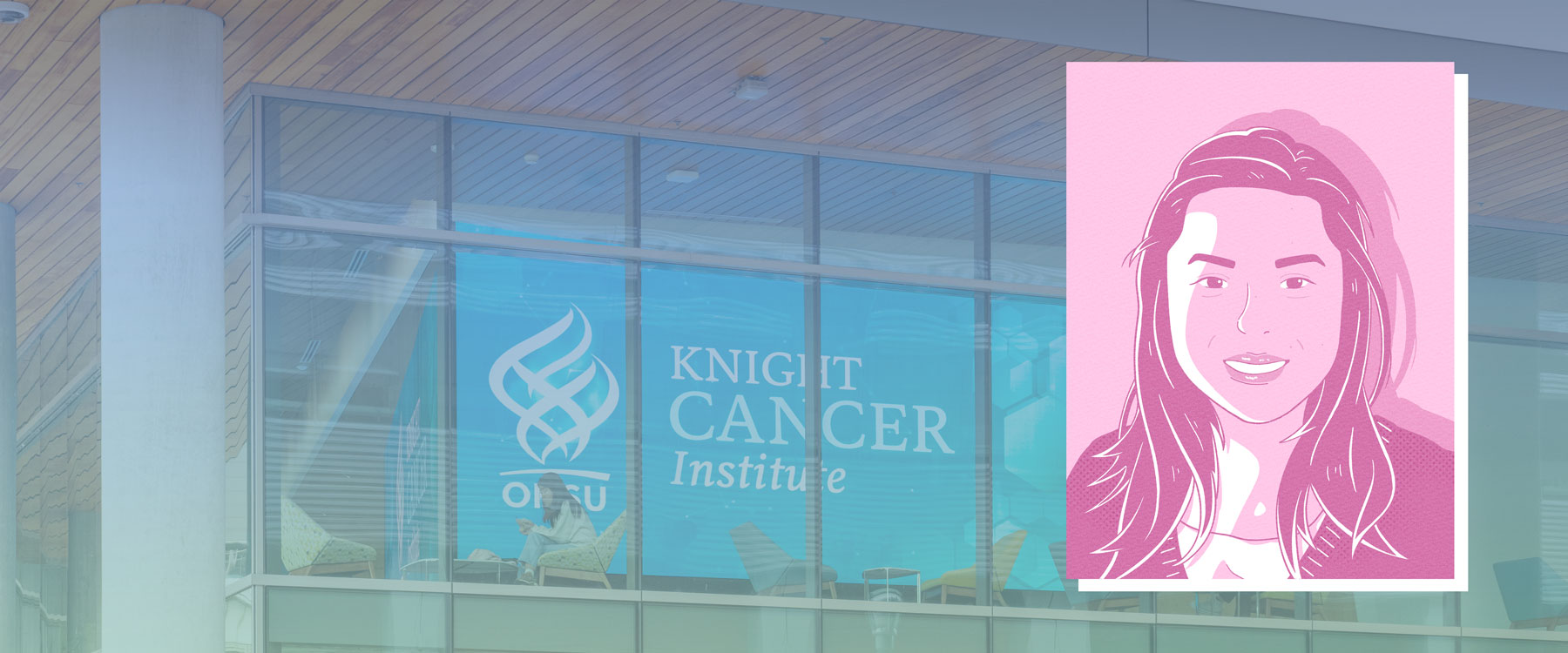Vivek Unni, MD, PhD, is the inaugural John Hammerstad, MD, Professor of Basic Research of Movement Disorders and the interim director for the Jungers Center for Neurosciences Research. He joined the Department of Neurology and the OHSU Parkinson Center and Movement Disorders Program in 2011. Before coming to OHSU, Unni was an instructor in neurology and a research fellow in the laboratory of noted Alzheimer’s researcher Bradley Hyman at Harvard Medical School and Massachusetts General Hospital.
Tell us about your work in Parkinson’s Disease
“My research focuses on a specific protein in the brain called alpha-synuclein that forms something called Lewy bodies, which are associated with cell death in Parkinson’s patients. But we don’t know much about what Lewy bodies actually do. Do they cause cells to die, or are they a defensive reaction that protects them? Or is it neutral — just a biomarker that the cell is sick? That’s a big, overarching question in the field. If we could learn more about that, it may be possible to find people who are going to develop Parkinson’s, even before they have problems. If we had a drug that could stop Parkinson’s disease at that time point, or very early on in the disease, it would be revolutionary.”
What’s significant about your findings published in 2019?
My lab showed that alpha-synuclein protein, which had been previously associated with cell dysfunction and death, actually has a crucial role in DNA repair. Our study showed that Lewy bodies cause problems by pulling alpha-synuclein protein out of the nucleus of brain cells. The proteins repair breaks in strands of DNA. It may be the loss of that function that’s killing the cell.
What made you choose OHSU?
“I was drawn to OHSU because it had a well-established clinical group studying Parkinson’s disease. Joseph Quinn and Jay Nutt (current and former directors of OHSU’s Parkinson Center, respectively) have really built the group into a world-class Parkinson’s center, and there was a lot of opportunity for someone like me, who was interested in basic science research in Parkinson’s.
“One of the great things about OHSU is that they support scientists, and that translates into intellectual freedom — especially as a younger faculty member getting started. You get to do what you think is important.
What role did philanthropy play?
“As part of my recruitment to OHSU, through a joint effort between the neurology department, the School of Medicine, the anesthesia department and money from the Benaroya Foundation, they were able to buy a sophisticated two-photon microscope that I needed for my research. It allows you to look more deeply into the brain of a living animal in a way that no other technology allows.
“I contacted several places when I was looking for jobs and the fact that OHSU was so willing to purchase this expensive piece of equipment told me volumes. Not very many places have the vision and the resources to do that.”




